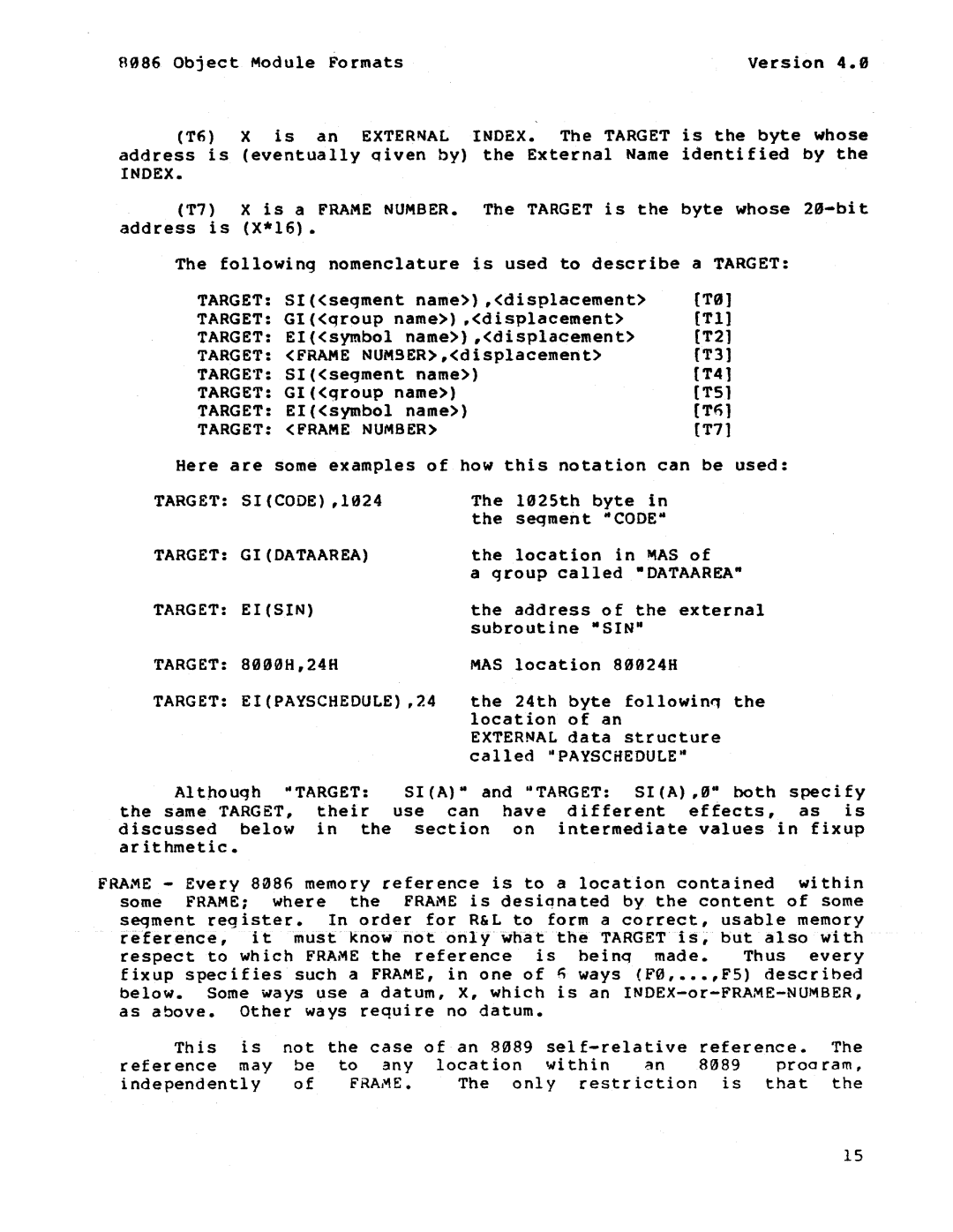
R986 Object Module FormatsVersion 4.9
(T6) X is an EXTERNAL INDEX. The TARGET is the byte whose address is (eventually qiven by) the External Name identified by the
INDEX.
(T7) X is a FRAME NUMBER. The TARGET is the byte whose
The following nomenclature is used to describe a TARGET:
TARGET: | SI«seqment name» | ,<displacement> | (T0] |
TARGET: | GI«qroup name» ,<displacement> | (TIl | |
TARGET: | EI«symbol name» | ,<displacement> | [T21 |
TARGET: | <FRAME NUM9ER>,<displacement> | (T3] | |
TARGET: | SI«seqment name» |
| (T41 |
TARGET: | GI«qroup name» |
| (T51 |
TARGET: | EI«symbol name» |
| (T~l |
TARGET: | <FRAME NUMBER> |
| (T71 |
Here are some examples of how this notation can be used:
TARGET: SI(CODE) ,1024 |
| The | l025th | byte in |
| ||
|
| the | segment | ·CODE" |
| ||
TARGET: GI(DATAAREA) |
| the | location | in MAS of |
| ||
|
| a qroup called | |||||
TARGET: EI(SIN) |
| the | address | of the external | |||
|
| subroutine | ·SIN" |
| |||
TARGET: 8000H,24H |
| MAS | location | 800248 |
| ||
TARGET: EI(PAYSCHEDULE) ,24 | the | 24th | byte | followinq | the | ||
|
| location | of | an |
| ||
|
| EXTERNAL data | structure |
| |||
|
| called dPAYSCHEOULE- |
| ||||
Altnouqh | SICA)" | and | "TARGET: | SI(A) ,0" | both specify | ||
the same TARG8T, their use can have different effects, as is discussed below in the section on intermediate values in fixup arithmetic.
FRAME - Every 8086 memory reference is to a location contained within some FRAME; where the FRAME is desiqnated by the content of some
seqment register. In order for R&L to form a correct, usable memory
reference, it must know not only what the TARGET is, but also with
respect to which FRAME the reference is heinq made. Thus every fixup specifies such a FRAME, in one of 5 ways (F0, ••• ,F5) described below. Some ways use a datum, X, which is an
This is not the case of an 8089
reference may be to any location within an 8089 proaram,
independently of FRA~E. The only restriction is that the
15
